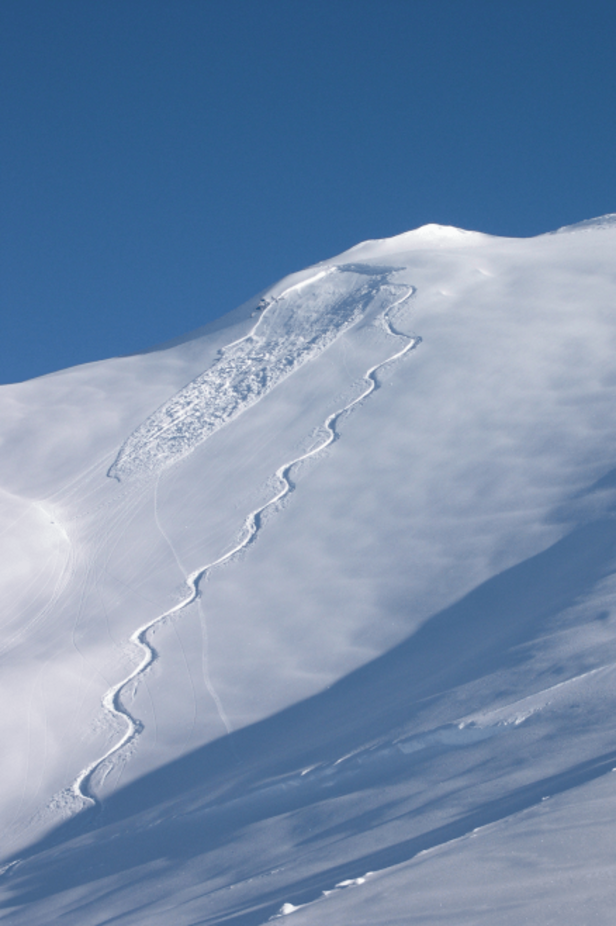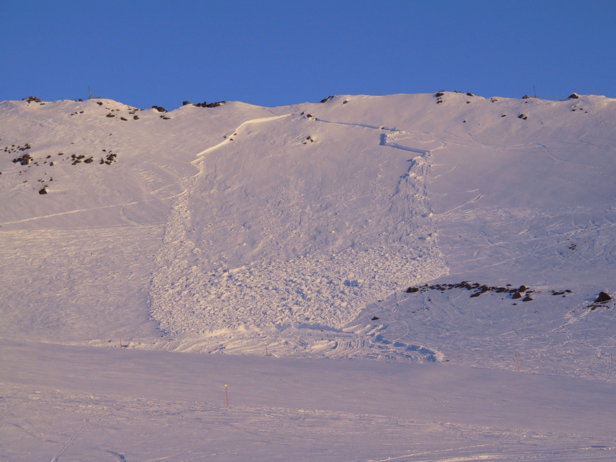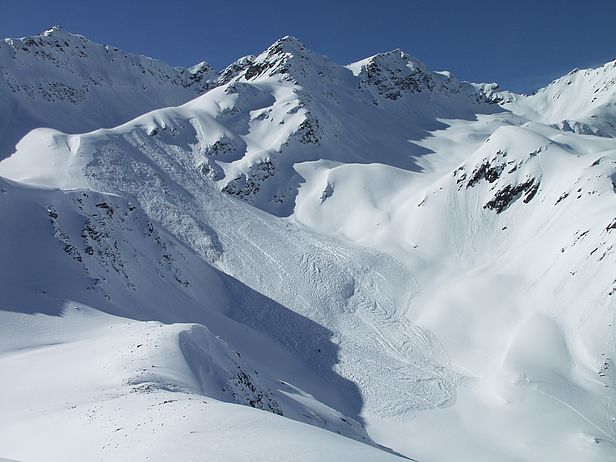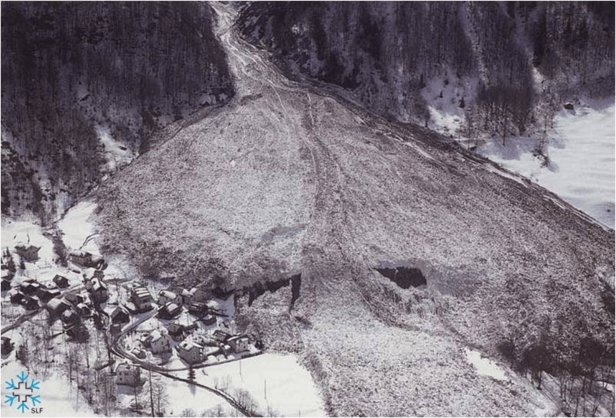The European avalanche warning services divide avalanches into five size categories (based on the Canadian classification). The avalanche size is defined, among other things, by the potential damage caused.
Under this definition, fatal 'skier-triggered avalanches' are often classified as 'medium' or (barely) as 'large' avalanches and reaches considerable dimensions, being typically 150 m in length and having a slab size of some 50 m by 80 m and an average slab thickness of around 50 cm. This is equivalent to a slab volume of approximately 2000 m3 or around 400 tonnes.
Size 1: Small avalanche (sluff) ¶
Size 2: Medium avalanche ¶
Size 3: Large avalanche ¶
Potential damage:
Can bury and destroy cars, damage trucks, destroy small buildings and break a few trees
Many avalanches that kill people are classified as 'large'.
Runout
Can cross flat terrain (well below 30°) over a distance of less than 50 m
Typical dimensions
Length: Several hundred metres
Volume: 10,000 m3
Size 4:Very large avalanche ¶
Potential damage:
Can bury and destroy trucks and trains Can destroy fairly large buildings and small areas of forest. Very large avalanches can occur at danger level 3 and are typical of danger levels 4 and 5.
Runout
Traverses flat terrain (well below 30°) over a distance of more than 50 m
Can reach the valley floor
Typical dimensions
Length: > 2 km
Volume: 100,000 m3




